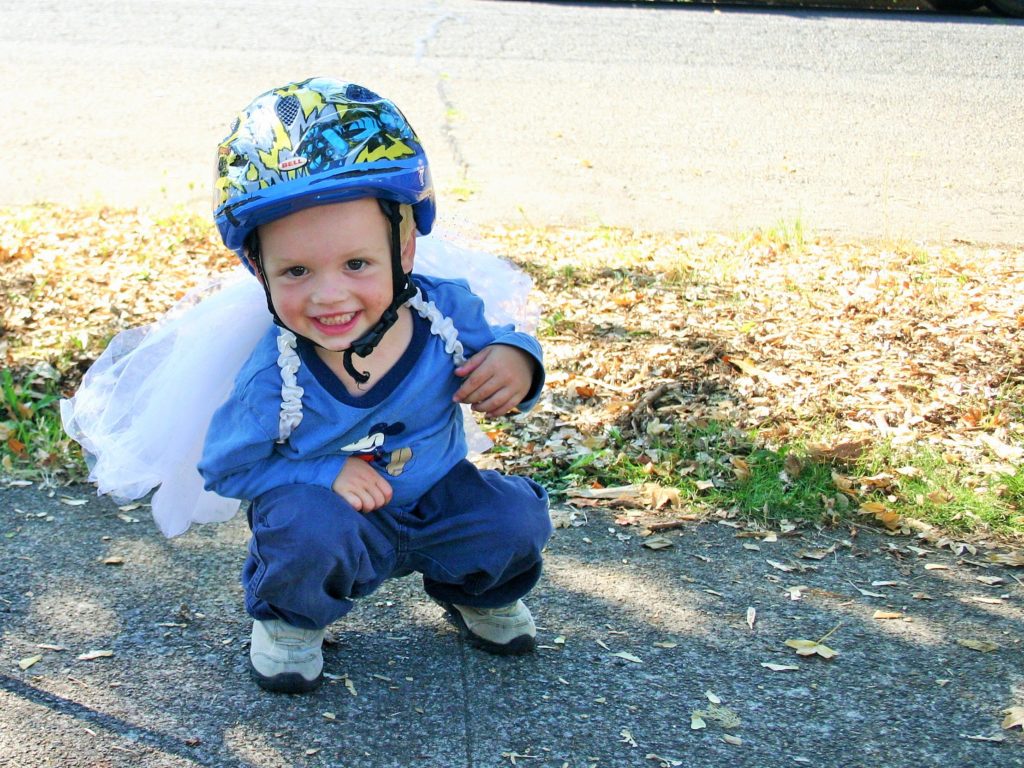The past two weekends, my neighbors held a yard sale. Apparently my boys could smell commerce happening nearby, because within moments of awakening, they were at the window. “The neighbor has a tent on his lawn,” Ezra announced. Both boys spent most of the weekends outside asking questions and fondling nicknacks or glued to the window watching people come and go.
“We need a canoe.” “Ball next door!” “Mom, can we go look at the games again?” “My boat.” They managed to tote home a number of odd things from the free box, including a stained white plastic ball that looks like it came from the antenna of a Jeep, a telephone that would have been state-of-the-art when I was Ezra’s age, and a wide-brimmed hat that fits no one in the house.
These finds joined other relics that Ezra’s lugged home over the years, including a couple of other land-line telephones, a broken audio cassette recorder, and a microphone. Apparently our compulsion to collect stuff starts at a young age, and it only seems to escalate from there. On our recent camping trip, I was amazed by all the things people bring to “get away from it all” – super-sized motorhomes, patio furniture, dog beds and crates and yards. Of course, we toted our share of stuff back and forth from our car, although fortunately we were severely constricted by its compact size.
It’s not that I don’t love stuff. Every time I turn on my washing machine, drop into my bed at the end of the day, or turn on my computer, I am thankful for the material things that make our lives better. My goal is not necessarily to have less. I’m not on a mission to pare my belongings to 100 things as many bloggers have amazingly done. I just want to be intentional about what I bring into my life. I want to spend my money, time, and attention on things that bring me happiness and satisfaction. And I want to try to keep in mind a purchase’s entire life cycle: where did it come from and where will it end up?
In this issue of YES! Magazine (all about the “Human Cost of Stuff”) Annie Leonard says it well: “I’m neither for nor against stuff. I like stuff it’s well-made, honestly marketed, used for a long time, and at the end of its life recycled in a way that doesn’t trash the planet, poison people, or exploit workers. Our stuff should not be artifacts of indulgence and disposability, like toys that are forgotten 15 minutes after the wrapping comes off, but things that are both practical and meaningful.” (My review of Judy Wicks’ Good Morning, Beautiful Business is also in this issue. Check it out if you see a copy!)
Visiting second-hand stores helps me be more intentional about new purchases. All those cluttered shelves of hardly used, outdated appliances helps take the sheen off the marketing and shiny newness in box and department stores. Recently Ezra and I wandered through several used stores together. He’s been wanting a Leap Pad learning system, because he loves playing with his friend’s, and I heard used stores tend to have vast quantities of them. When the first three stores didn’t have one, Ezra was desperate to bring home something – anything. He insisted he would be happy with a pair of butterfly wings, a toy cash register, or a toy laptop instead of a Leap Pad. I convinced him to wait until we checked out the last store.
They had exactly what Ezra wanted, and it was just $5. “I’m so glad we waited,” Ezra beamed as he hugged his new Leap Pad. I’m hoping he learned something about being intentional about purchases. And for now, fortunately, the yard sales are over; please don’t let any of our neighbors open an ice cream cart.
Do you try to be intentional about your purchases? Do you have any tips to share? I’d love to hear about it in the comments.
